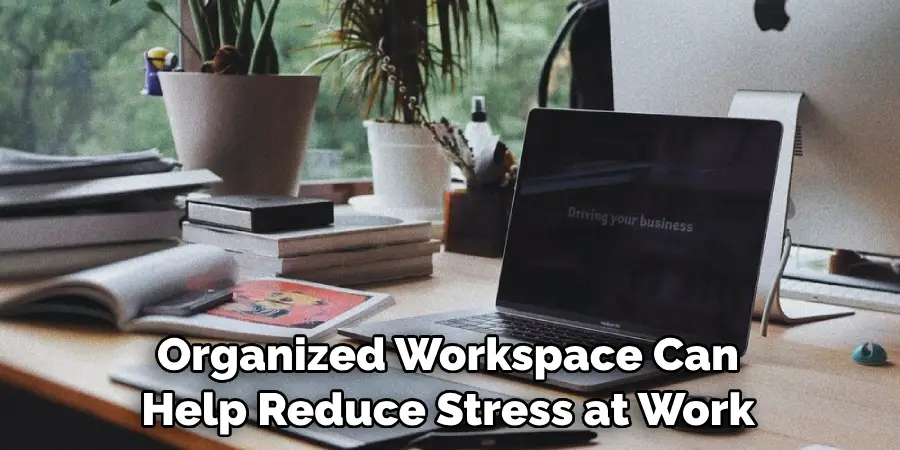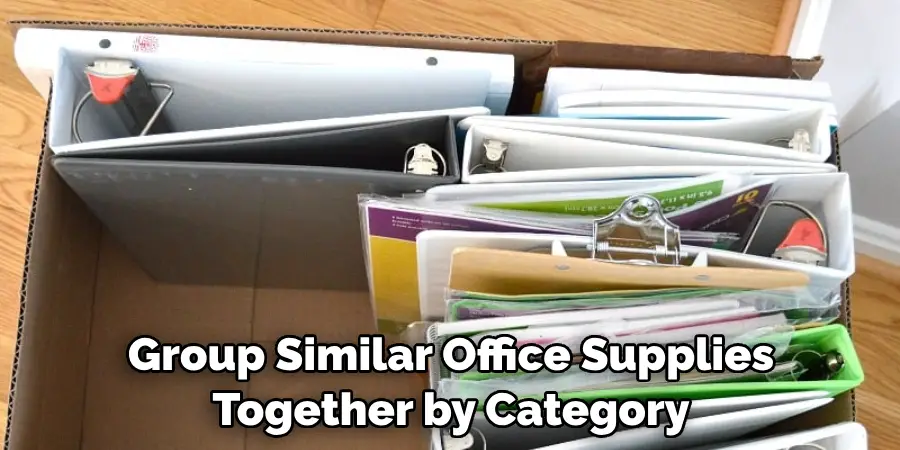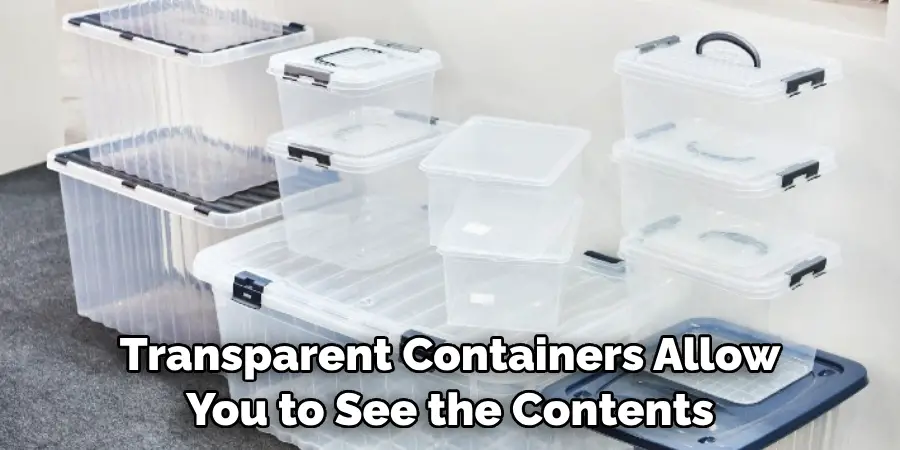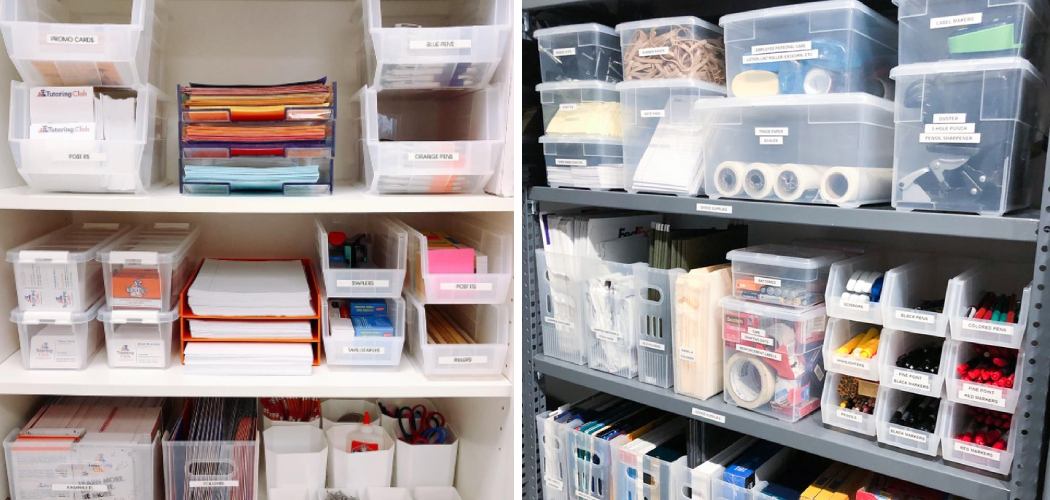Maintaining a well-organized workspace is crucial for productivity and efficiency in any office setting. With the abundance of office supplies that accumulate over time, keeping everything in order can be a challenge. From pens and paperclips to staplers and sticky notes, the array of office supplies can quickly become overwhelming if not properly organized.

Fortunately, there are numerous strategies and techniques that can help you effectively organize office supplies at work. In this article, we will explore practical tips and ideas on how to organize office supplies at work and create a harmonious environment.
Whether you’re dealing with a cluttered desk or struggling to find essential items when you need them, the following methods will guide you towards a well-organized and productive office space. Get ready to transform your workspace into an oasis of efficiency and order.
Importance of Office Supply Organization for Productivity and Efficiency
Organizing office supplies is important for productivity and efficiency in the workplace. By having an organized system that can easily be accessed and maintained, employees have access to the materials they need to do their job quickly and efficiently.
This will also help reduce clutter in the workspace which can lead to a more pleasant working environment. Organizing office supplies can even impact the bottom line of a business, as it reduces time wasted in searching for items and increases productivity.

Organizing office supplies also helps to reduce stress in the workplace. By having an organized system, employees can easily locate what they need, reducing frustration from not being able to find needed materials or tools.
This will help ensure that employees are better able to focus on their tasks without worrying about where certain things are located. Furthermore, if everyone knows exactly where all of the office supplies are kept, then there is less chance of them being misplaced or lost.
Having a well-organized office supply room can also help save money by keeping track of what has been purchased and when it needs to be restocked. With well-documented inventories, companies can be informed when certain items are running low and need to be replenished. This keeps employees from having to purchase something that is already available in the office.
Benefits of Having a Well-Organized Workspace
Organizing office supplies at work can be beneficial in a variety of ways. Having a well-organized workspace can save time, reduce stress, and lead to greater productivity.
Time Savings:
If office supplies are organized in a way that makes them easy to find, it can save workers time when they need to use or locate supplies. This is especially helpful for those who must frequently swap out tools during their daily tasks, as they will not have to spend time rummaging through bins of unorganized items.
This also allows more efficient brainstorming sessions and meetings with coworkers who can quickly retrieve the materials they need without wasting valuable time searching around.
Reduced Stress:
Having a well-organized workspace can help reduce stress at work by eliminating unnecessary clutter and providing an orderly atmosphere conducive to productivity.

Workers will be able to focus on their task without getting distracted by messy piles of supplies or a chaotic environment. Workers will also be more likely to take pride in their workspace and feel less overwhelmed by the work they need to accomplish.
10 Methods How to Organize Office Supplies at Work
1. Declutter and Assess:
The first step in organizing office supplies is to declutter your workspace. Remove any unnecessary or expired items, such as old pens, worn-out notebooks, or outdated documents. Once you have a clear workspace, assess the remaining supplies to determine what you need and what can be discarded or donated.
However, don’t rush into throwing everything away – you may find that some of your supplies could be useful for a future project. Additionally, consider the space available for organizing office supplies. This will help you determine what to keep and where everything should go.
2. Categorize Supplies:
Group similar office supplies together by category. Create categories such as writing instruments, paper products, desktop essentials, and storage items. This will make it easier to locate specific items when needed.

While organizing your supplies, assess and discard any outdated or broken items. Although it may seem convenient to keep these items, they will only lead to clutter and disorganization. Make sure to label all storage containers, so you and your coworkers will know what they contain.
3. Utilize Drawer Dividers:
If you have desk drawers, invest in drawer dividers to create separate compartments for different categories of office supplies. This will prevent items from getting mixed up and make it easier to find what you’re looking for. Use dividers to separate pens, paper clips, sticky notes, and other small items.
You could also use them to separate items like files, binders, or file folders. This will help you stay organized and keep your desk drawers clutter-free. Though drawer dividers may seem like a small investment, they can make a big difference in maintaining an organized workspace. Once everything is sorted, you will be able to find what you need quickly and easily.
4. Label Everything:
Labeling is an essential aspect of office supply organization. Use labels to identify drawers, containers, and shelves where supplies are stored. This will save time and prevent confusion when searching for specific items. Consider using a label maker or adhesive labels for a neat and professional appearance.
Additionally, labeling items like pens and paperclips can help to make sure everyone knows where they belong. Labels also help to prevent theft or accidental damage, as it is easier to identify who owns specific items. With labels in place, supplies can be quickly identified and put back into the correct locations when needed.
5. Clear Containers and Bins:
Invest in clear storage containers and bins to keep your office supplies organized. Transparent containers allow you to see the contents at a glance, making it easier to locate items quickly. Use different-sized containers to accommodate various supplies.

Stackable containers are especially useful for maximizing storage space. Label each container to quickly identify what’s inside and consider labeling both the front and back for quick access. Place your containers in a visible area or on shelves to keep everything organized and in its place.
6. Establish a Mail Station:
Designate an area as a mail station where you can organize incoming and outgoing mail, envelopes, stamps, and other mailing supplies. Use a desktop organizer or wall-mounted pockets to sort mail into categories such as “to be filed,” “to be responded to,” or “to be forwarded.” This will prevent paperwork from piling up and ensure that important documents are attended to promptly.
7. Implement a Filing System:
Create a filing system for important documents to prevent paper clutter on your desk. Use labeled file folders or hanging file organizers to categorize documents based on their relevance or urgency. Consider color-coding files for easy identification. Regularly review and purge files to keep the system streamlined.
Consider scanning documents and saving them electronically to reduce physical document clutter. While a physical filing system can be beneficial, establish digital folders as well for those who prefer an electronic option. Periodically review both systems to ensure information is up-to-date and easily accessible.
8. Digitalize When Possible:
Embrace digital solutions to reduce the need for physical office supplies. Scan and store documents electronically, use digital note-taking apps, and explore project management tools to minimize paper usage and clutter.
Digital files can be easily organized, searched, and accessed from any device, promoting a more efficient and environmentally friendly workspace. Additionally, digital documents can reduce the need for physical storage, helping to free up space in your office.
9. Utilize Vertical Space:
Maximize vertical space by using wall-mounted shelves, pegboards, or corkboards to store and display office supplies. Hang hooks or pegs to hold items like headphones, lanyards, or cables.
Magnetic boards or corkboards can hold notes, reminders, and important documents, keeping them within sight and easily accessible. If your office has high ceilings, consider adding overhead storage racks for additional space.
10. Regular Maintenance and Cleaning:
To maintain an organized workspace, establish a routine for cleaning and tidying up. Take a few minutes each day to put away supplies, file documents, and clear off your desk. Regularly assess and restock office supplies to ensure you have everything you need. Additionally, schedule periodic deep-cleaning sessions to declutter and refresh your workspace.
Conclusion
Overall, organizing your office supplies can be a daunting task — but it doesn’t have to be! With the tips outlined in this blog post, you can easily make sure everything is clean and orderly. Take your time when going through each step, from delegation to labelling to sorting.
And remember that it’s okay to ask for help if you need it—organization shouldn’t be a one-person job. We hope you feel confident and empowered to get started on keeping your office supplies clean and organized. Give yourself a pat on the back for taking this first big step towards managing your workspace more efficiently How to Organize Office Supplies at Work.

